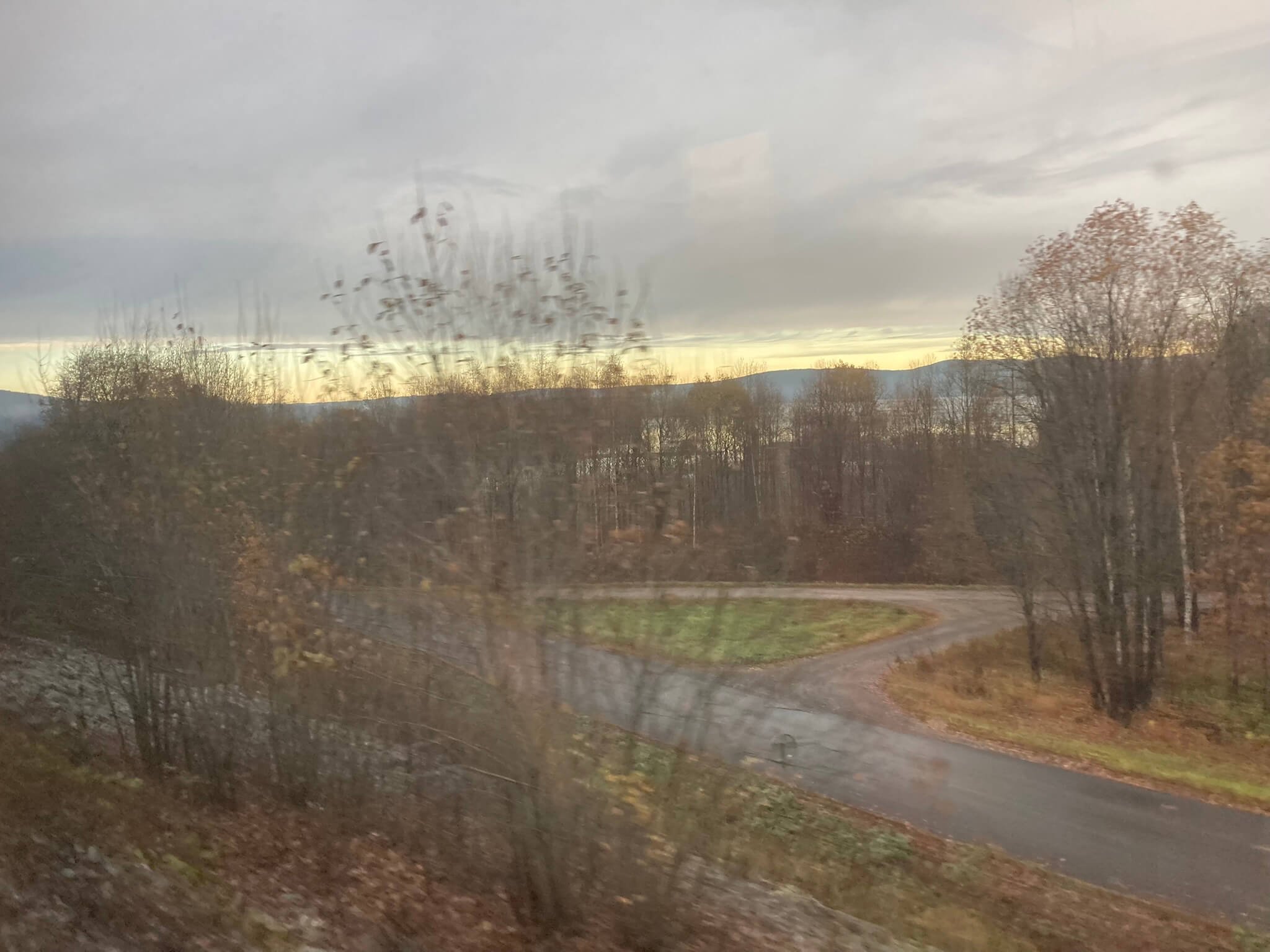Interrail: my experience in Sweden
Have you ever dreamed of embarking on an adventure through the picturesque landscapes of Sweden? Well, let me tell you about my experience with Interrail - a journey that took me through the heart of this beautiful Scandinavian country.
From the vibrant and bustling city of Stockholm, to the charming town of Umeå, I traveled through Sweden's stunning landscapes, encountering friendly locals and experiencing the country's unique culture along the way.
Join me on this journey as I share my personal experience with Interrail in Sweden. From breathtaking views of rolling hills and sparkling lakes, to sampling delicious Swedish cuisine and immersing myself in the country's rich history and traditions - this is a travel adventure you won't want to miss!
What is Interrail?
Let’s rewind a bit and start with the basics. What is Interrail? Interrail is a travel pass that allows you to explore Europe by train. With an Interrail pass, you have access to an extensive network of trains that can take you to a variety of destinations across the continent, from bustling cities to quaint villages and picturesque countryside. The pass offers flexibility, giving you the freedom to choose your own itinerary and travel at your own pace.
Interrail passes come in various forms, from single-country passes to global passes that allow you to travel across multiple countries. Whether you're a solo traveler, a couple, or a family, Interrail is a great way to see Europe and create unforgettable memories along the way. Here you can find a more detailed article about Interrail and Eurorail.
Which Interrail pass did I get?
The type of pass that is best for you relies heavily on what kind of traveler you are. I’m a slow traveler. I prefer to stay in one place for a longer period of time because I combine working and living abroad. I’m not looking to cram in as many places as possible in a short time. That’s why I went with the 10 days in 2 months pass.
With the 10 days in 2 months pass, you get 10 travel days that you have to use within 2 months. A travel day lasts 24 hours and it doesn’t matter if you take 1 train or 5 trains. For example, I traveled from the closest train station to where I live in Belgium to Copenhagen, Denmark. It took me 5 trains and 13 hours. After spending a weekend in Copenhagen, I traveled to my first destination in Sweden, which took me another 3 trains and 6 hours. Once I’d arrived at my first destination in Sweden, I stayed there for 5 weeks with one round-trip to Stockholm.
As you can see, I didn’t travel a lot. That’s why the 10 days in 2 months were perfect for me. I needed a minimum of 5 travel days to get to my pre-booked destinations in Sweden. The other 5 travel days, I could use for whatever I wanted, for example, a round-trip to Stockholm and once up north to see the northern lights.
But, you might be a different kind of traveler. If your vacation is shorter and you want to see a lot of different cities on your trip, the 1-month continuous pass might be better for you. With this pass, you can travel each and every day for an entire month. Head over here to check out the different kinds of passes Interrail offers.
Is Interrail budget-friendly?
YES! Again, this depends on what kind of traveler you are, but for me, it was a huuuuge money saver. Trains are expensive. I know, who would have thought? International trains are even more expensive. There are some tips and tricks to keep the price down, such as booking in advance and going off-season, but still.
My first trip Belgium - Copenhagen would have cost me around 150 to 200 euros, depending on the exact route and when you book it. With my Interrail pass, it cost me 40,- euros. If I booked a normal train ticket for Belgium - Copenhagen and back again, I would arrive at the same price as my 10 days in 2 months Interrail ticket. That meant that those 8 other travel days are basically “free”.
I did make the most of my ticket. Because let’s be honest, nobody likes 13-hour travel days where you have to switch trains 4 or 5 times. But, I’m a budget traveler and that’s the kind of sacrifice you have to make. In the end, I saved about 550,- euros ($ 580) using an Interrail pass compared to buying those train tickets separately.
There is one thing you have to take keep in mind when comparing prices. International and long-distance trains often require seat reservations. Seat reservations in Sweden were cheap (5 to 10 euros), but I’ve read that seat reservations in Spain and France are much more expensive. If those seats reservations are mandatory, they can add up pretty quickly.
Is the Interrail pass easy to use?
YES! All you need is the Interrail app and you’re ready to go. The app is called Rail Planner and it’s super easy to use. There are 5 buttons: Planner, Stations, My Trip, My Pass, and More.
The planner allows you to plan your (international) trips. Just put in the station you wish to leave from and your destination. You can set a date and time. There are also optional filters, such as a minimum time between transitions and you can avoid trains that have mandatory seat reservations. You can also include busses, boats & ferries and metro & tram if you want. It’s basically the best international public transportation planner I’ve ever seen.
The Station gives you a complete list of all departing trains from a certain station. It’s an international timetable of pretty much all European train stations. To keep it working offline, the timetable is not updated in real-time. It is, however, very useful if you are looking for your next destination and you could use some inspiration. It also shows which track you need to be, as long as there are no last-minute track changes.
My Trip gives you an overview of your trip. It includes all your travel days and which trains you took. Here you can add or delete travel days from your pass. It has some fun statistics that show you how many hours you’ve traveled, how many countries you’ve visited, and how many kilometers you’ve done. And for you eco-minded travelers, it also shows how much CO2 you saved compared to flying. (Spoiler alert: it’s a lot.)
My Pass shows all the passes you’ve bought. This is where you activate a pass and keep track of how many travel days you have left and how long your pass is valid. This is also the place that has your ticket.
The More button holds everything else. Here you can book seat reservations, find more benefits such as discounts on certain hotels or activities, the community, and the help center.
My experience Interrailling in Sweden
I absolutely adore traveling by train in Sweden. Why? Let’s make a list.
The trains are clean, modern, and fast;
The trains run (mostly) on time. I’m sure there are exceptions, but I rarely ran into delays or cancellations;
The Swedish landscape is absolutely stunning;
Traveling by train is a lot more flexible than by plane;
The stations are clean and heated. That last one is especially important during wintertime;
You always have a seat thanks to seat reservations. Seat reservations are cheap, too;
If something happens, a staff member will most likely help you out. Of course, this can depend on the person, but I found Swedish train personnel a lot friendlier than what I’m used to in Belgium;
The Interrail app is super handy when it comes to international planning, especially if you don’t speak the local language. I found all my information on the app and was able to double-check the train number and track on those big timetables at the stations.





My personal recommendations for traveling with Interrail
Get the most out of your ticket. Use your Interrail pass for tickets that are otherwise crazy expensive, such as international tickets and/or very long train rides. This will save you the most money.
Plan for delays. If you do massive travel days as I did, something is going to go wrong. Nothing ruins a travel day like missing a connection, so make sure you have enough time for transfers. I found I need 20 to 30 minutes for local trains, but at least 1 hour for longer (international) trains.
Don’t book seat reservations through the app. Yes, it’s easier, but I found it’s also more expensive. I can only speak for Sweden and Germany, so other countries might be different. You’ll also have to look up how to book seat reservations separately, because technically you already have the ticket, just not the seat. For example, this page explains how you book seat reservations through SJ in Sweden.
Pick a window seat. I love traveling by train because it gives me the opportunity to look outside and see the landscape. My trip up north to Umeå to see the northern lights was 100% worth it just for the train ride alone. Beautiful nature, lots of wildlife, and a stunning sunset are all you need to have a magical travel day.
